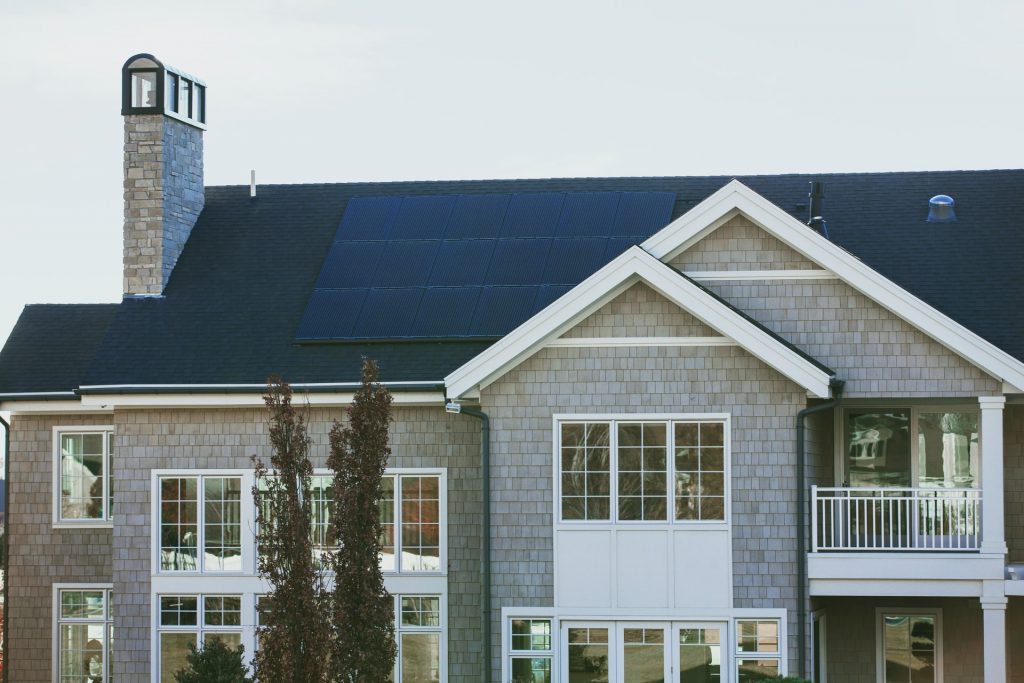Comwatt is a French startup that optimizes the triggering of your electrical appliances according to the availability of photovoltaic energy, increasing the profitability of your panels.
We have classified it in the“Low-carbon electricity generation” category.
Grégory Lamotte, President of Comwatt, kindly agreed to answer our questions. Many thanks to him 🙂

What environmental issues does Comwatt address?
In the current context, everyone understands that there is an environmental problem. Everyone agrees that there is, but it’s hard to know where to start. A lot of people are waiting for the government to pass laws or make decisions on their behalf to solve this problem, but the solution won’t come from the top, it will come from the bottom, from the citizen.
We have therefore developed a technology that enables citizens to understand their energy consumption, reduce it, lessen its environmental impact and produce as much renewable energy as possible at the point of consumption. To date, we have marketed 20,000 installations in France, enabling our customers to reduce their energy bills by over 70%.
What solution does Comwatt offer?
Our solution is a technology based on connected objects. Everyone has the Internet now, and everyone has electrical equipment. Comwatt is a technology that bridges the gap between the Internet and your equipment.
Our solution combines connected objects and software to measure and control your equipment in real time using artificial intelligence. Our solution is installed and marketed by a network of approved craftsmen.
What added value do you offer your customers?
Our technology makes it possible to shift consumption. If you put solar panels on your roof to reduce your bill, you’ll quickly realize that the solar panels aren’t going to produce electricity when you need it most. That’s because the solar panels are going to produce mainly in the middle of the day, when you’re not often at home.
If you decide to set up self-consumption with solar panels and you don’t use Comwatt technology, you’ll simply reduce your bill by 20%, which corresponds to recruitment between the time you produce and the time you consume.
With Comwatt technology, you modify the time at which your equipment consumes so that it consumes at the precise moment when the energy is produced, thereby reducing your bill by up to 70%.
Have you identified any competitors? If so, what are your competitive advantages?
We have several competitors in France who offer solutions similar to ours. We have a number of advantages.
Firstly, the Comwatt solution is the first on the market. For 7 years now, we’ve had 20,000 customers, and with this installed base, we have very good customer feedback and very good information from the field, which enables us to fine-tune our algorithms so as to be more and more efficient every day.
Secondly, we have developed a solution that is very easy to install and even easier to use. Because at Comwatt we believe that developing an efficient technology is a good start, but the most important thing is to develop a technology that can be accessed by as many people as possible.
Last but not least, our solution can be installed in any home in less than 30 minutes, whereas Comwatt’s competitors’ solutions take 2 to 5 hours. This is a very significant gain for the craftsman who has to install this technology.
What’s currently preventing Comwatt from completely filling its market?
The self-consumption market is colossal. There are currently around 70,000 installations in France, and the French Ministry of Energy has estimated that over 4 million sites will be equipped in 10 years’ time.
One of the challenges is to make consumers aware that solar energy has become very affordable. Connected object technology has also become very affordable, and together they can reduce electricity bills by 70%.
However, our biggest obstacle is undoubtedly regulation: the administrative blockages that are slowing down the energy transition.
There are several administrative bottlenecks:
Firstly, it’s becoming very difficult for even a serious craftsman to find ten-year insurance to cover work on his sites – it’s a real obstacle course. The constraints weighing on craftsmen are so numerous and so complex that many are discouraged from taking up solar energy.
Secondly, the energy transition is in direct competition with the incumbent energy suppliers, who make their living from energy sales. Indeed, if a customer decides to reduce consumption or produce energy on his roof, that’s as much energy less that the energy supplier will sell. The incumbent energy suppliers have therefore put in place a strategy of systematically blocking the deployment of the energy transition.
For example, do you know why only owners of single-family homes can reduce their electricity bills thanks to solar energy? Do you know why tenants and city dwellers are deprived of this reduction in the cost of producing solar-generated electricity? It’s a regulatory block, which is revolting.
French MPs passed a law allowing collective self-consumption over 2 years ago. What’s more, European deputies have also voted in favor of collective self-consumption in France for the past 18 months. But the incumbent operators don’t want this law to be applied, because it’s in the interests of the citizen but not in the interests of these operators.
In a nutshell:
- Your photovoltaic panels reduce your electricity bill by 20% without Comwatt and 70% with it.
- 30 minutes to install Comwatt sollution
- 20,000 installations in France
- A potential market of 4 million installations over 10 years
- Key challenges: informing consumers and combating administrative obstacles
For more information, please consult the press articles referenced on their website.
